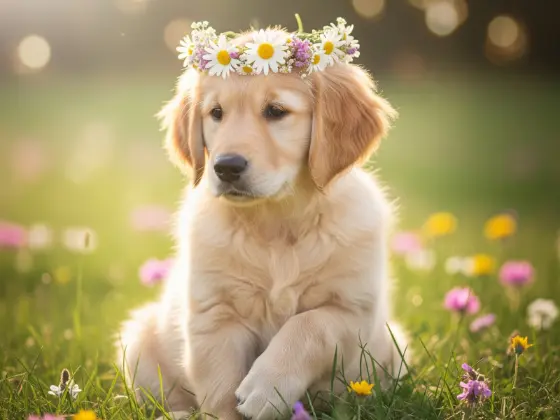How to Keep Your Golden Retriever Active and Healthy
Golden Retrievers are known for their playful spirit, loving hearts, and boundless energy. But to keep that tail wagging for years to come, it’s important to care for both their physical and mental well-being. From morning walks to healthy meal planning and mental games, this guide will walk you through everything you need to keep your Golden Retriever active, fit, and thriving.
1. Daily Physical Exercise: Keep That Energy Flowing
“A tired Golden is a happy Golden.”
Golden Retrievers are highly energetic dogs. Without regular exercise, they may become bored or even destructive. A healthy adult Golden needs at least 60–90 minutes of physical activity each day. This can be divided between walks, fetch games, running, or even swimming, which they naturally love.
Puppies need shorter, controlled play sessions multiple times a day to avoid joint stress. Senior Goldens may need gentle walks and soft play. Adjust the intensity according to your dog’s age and health. Always watch for signs of overexertion such as heavy panting or limping.
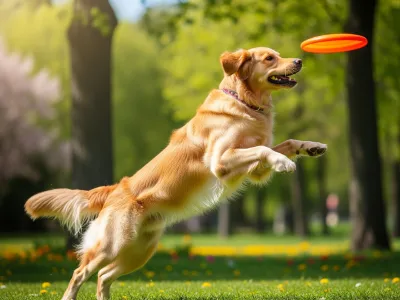
2. Mental Stimulation: Keep Their Brain Busy Too
Golden Retrievers are intelligent and eager to learn. Mental stimulation is just as important as physical exercise. Without it, they may chew, bark, or dig due to boredom.
Engage your dog with:
1. Puzzle Feeders – A Fun Way to Feed the Brain
Golden Retrievers are intelligent and love solving problems. Puzzle feeders turn mealtime into a brain-boosting challenge. These toys make your dog work for their food by sliding, nudging, or pawing compartments open. This keeps them mentally sharp and slows down fast eaters. It also reduces boredom, especially when you’re not home, making it a healthy and fun activity for their curious minds.
2. Hide-and-Seek Games – Build Bond & Boost Focus
Playing hide-and-seek with your Golden Retriever isn’t just fun—it helps them learn focus and patience. You can hide treats or toys around the house or yard and encourage them to sniff and search. You can even hide yourself and let your pup find you! This simple game taps into their natural hunting instincts and strengthens the bond between you and your dog.
3. Obedience Training Sessions – Discipline with Love
Golden Retrievers thrive on structure and love to please their humans. Obedience training is a perfect way to guide their energy. Regular short sessions (5–10 minutes daily) on commands like sit, stay, come, or heel help improve behavior and confidence. Use positive reinforcement—like treats, praise, or belly rubs—to motivate and create a trusting relationship.
4. New Tricks or Scent Games – Keep the Mind Active
Teaching new tricks or playing scent games is excellent for mental stimulation. Goldens are fast learners and enjoy challenges. Whether it’s high-fives, rolling over, or fetching specific objects by name, new tricks keep them mentally engaged. Scent games—like hiding a treat under cups or around the yard—tap into their powerful nose and provide enriching fun.
Even ten minutes of daily training can provide strong mental enrichment. Rotating toys and offering new challenges helps prevent boredom and builds a stronger bond between you and your dog.
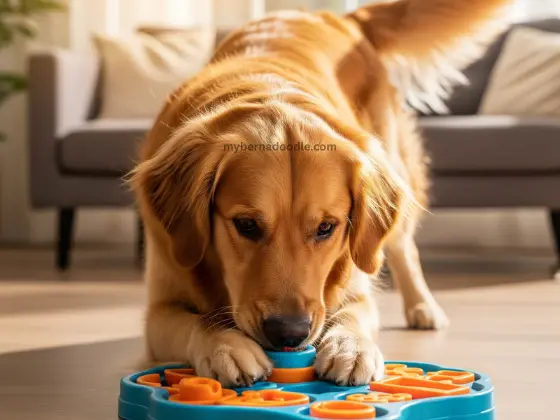
3. Balanced Diet: Fueling Their Active Lifestyle
Nutrition plays a crucial role in your Golden Retriever’s energy, coat health, and longevity. Choose high-quality dog food that lists meat as the first ingredient, and consult your vet for guidance on portion size.
For active Goldens:
1. Include Healthy Fats (Omega-3s) for Coat and Joints
Golden Retrievers benefit greatly from healthy fats, especially omega-3 fatty acids like those found in fish oil, flaxseed, and salmon. These fats support a shiny, soft coat and help reduce dry, itchy skin. They also play a vital role in keeping joints healthy—especially important for Goldens, who are prone to hip dysplasia and arthritis as they age. Adding omega-3s to their diet promotes mobility, reduces inflammation, and supports heart and brain health too.
2. Ensure Proper Protein Intake for Muscle Maintenance
Golden Retrievers are active, muscular dogs that need quality protein to maintain their strength and energy. A protein-rich diet—coming from sources like chicken, turkey, beef, fish, or eggs—helps support muscle repair, growth, and daily activity. Puppies need it for development, while adult and senior Goldens need it to stay fit and strong. Make sure your dog’s food lists real meat as the first ingredient and offers a balanced protein level suitable for their age and activity level.
3. Avoid Fillers Like Corn and Wheat That Add Empty Calories
Many commercial dog foods include cheap fillers like corn, wheat, and soy. These ingredients don’t provide much nutritional value and often lead to weight gain, digestive issues, or food sensitivities in Golden Retrievers. Since Goldens are prone to obesity, it’s best to avoid foods that are heavy in carbs and empty calories. Instead, choose high-quality kibble or raw food that’s free from fillers and packed with whole ingredients like meat, veggies, and beneficial grains like brown rice or oats.
Don’t overfeed treats—use veggies like carrots or apple slices instead of store-bought snacks. Maintain a steady weight to prevent joint issues and heart strain with nutritious, natural food.
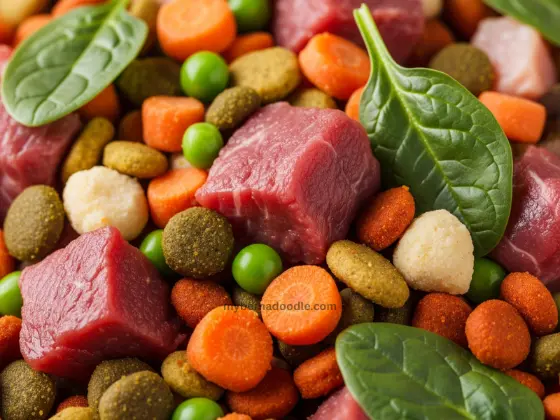
4. Routine Vet Checkups and Preventive Care
Even a highly active Golden can suffer from silent health problems. Schedule annual vet visits to screen for common issues like hip dysplasia, allergies, or thyroid imbalances.
Vaccinations, flea/tick prevention, and dental care all contribute to long-term health. Also:
1. Keep an Eye on Ears – They’re Prone to Infections
Golden Retrievers have floppy ears that don’t allow much airflow, making them prone to ear infections. Moisture, dirt, or leftover water after a bath or swim can get trapped inside, creating the perfect environment for bacteria or yeast to grow. It’s important to check their ears weekly. Look for signs like redness, bad odor, or excessive scratching. Clean gently with a vet-approved ear cleaner and never insert anything deep inside. Early care helps avoid discomfort and expensive vet visits.
2. Trim Nails Monthly to Prevent Paw Strain
Long nails can cause pain and put unnecessary strain on your Golden’s paws and joints. When nails grow too long, they may affect your dog’s ability to walk comfortably. As a general rule, trim your dog’s nails every 3–4 weeks. If you hear clicking sounds when they walk on the floor, it’s time for a trim. Use a proper pet nail clipper and be careful not to cut too deep. Regular trimming keeps their paws healthy and movement stress-free.
3. Brush Their Coat 2–3 Times Weekly to Avoid Matting
Golden Retrievers have thick, double coats that shed year-round—especially during spring and fall. Without regular brushing, their fur can easily become tangled or matted, which can irritate the skin underneath. Brushing 2–3 times a week removes loose hair, prevents mats, distributes natural oils, and keeps the coat soft and shiny. During heavy shedding seasons, you may need to brush more often. It’s also a great way to bond with your dog while keeping them comfortable and clean.
4. Watch Their Weight Carefully
Golden Retrievers gain weight easily. Obesity leads to:
- Joint pain
- Diabetes
- Heart issues
Feed measured portions and avoid table scraps. Keep an eye on their waist and energy level.
These habits are part of an active lifestyle and contribute to your dog’s physical and emotional wellness.

5. Social Play and Outdoor Adventures
Golden Retrievers are naturally social and love outdoor adventures. Take them to dog parks, hiking trails, or plan safe playdates. Letting them explore nature enhances mental stimulation and physical movement.
Being around other dogs improves their behavior and emotional health. However, supervise interactions and ensure other dogs are well-behaved too. Always bring water and snacks for longer outings.
If you live in an apartment or urban setting, increase indoor playtime and take frequent walks. Even simple outdoor sniff sessions can reduce anxiety and increase engagement.
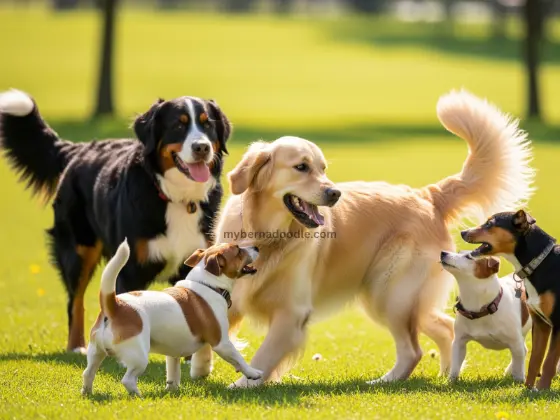
6. Groom Their Coat Regularly
Their double coat sheds year-round and needs attention.
Brush 2–3 times per week
Bathe once a month
Use de-shedding tools during heavy shedding seasons.

7. Keep Them Hydrated
Fresh, clean water is essential, especially after exercise. Dehydration causes fatigue, dry nose, and kidney strain. Use stainless steel bowls and clean them daily.
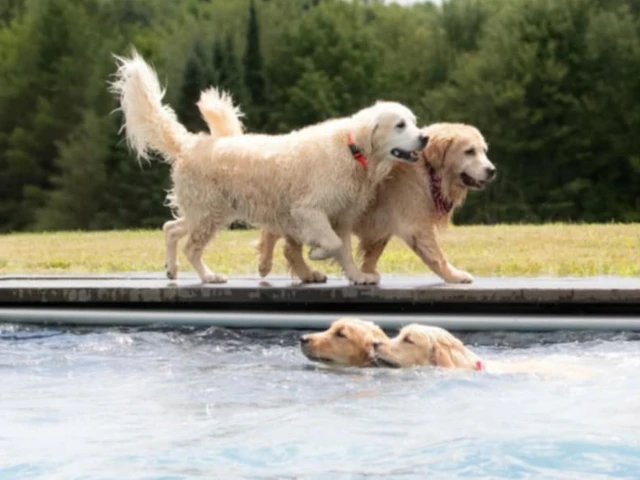
8. Maintain a Clean and Safe Environment
A clean home and safe yard reduce infection risks.
- Clean bedding
- Remove small choking hazards
- Secure fences to prevent escapes

9. Monitor Their Behavior and Body Language
Changes in mood, appetite, or posture may indicate a health issue. Watch for:
- Limping
- Excessive scratching
- Bad breath
- Withdrawal

10. Rest and Recovery: Don’t Skip Downtime
Yes, active dogs need rest too. Golden Retrievers may act like they’re ready to play all day, but their joints and muscles need proper recovery time. Provide a comfy, supportive bed—especially for older dogs.
Create a consistent daily routine with time for rest after high-energy activities. This avoids overexertion and reduces the risk of joint strain and long-term fatigue.
If your Golden suddenly seems lethargic or disinterested in normal activities, consult your vet—it could signal underlying health issues.

11. Give Time, Affection, and Emotional Support
Golden Retrievers are emotional companions. They thrive on connection and affection. Play with them, cuddle them, talk to them.
Loneliness can cause anxiety and even depression.
“The more you love them, the longer they live.”

📋 FAQs – Golden Retriever Health & Activity
Q1: How much exercise is enough for a Golden Retriever?
A healthy adult Golden needs 60 to 90 minutes daily — a mix of walks, fetch, and mental play.
Q2: What’s the best food for Golden Retrievers?
High-protein, grain-free (if needed), Omega-3 rich food with no artificial ingredients is ideal.
Q3: Do Golden Retrievers suffer from any common diseases?
Yes, they are prone to hip dysplasia, cancer, allergies, and heart issues. Regular vet visits help detect these early.
Q4: Can I groom my Golden Retriever at home?
Yes! Brush regularly, bathe monthly, and clean ears weekly. A groomer can help with nail trimming and deep de-shedding.
Q5: What signs show my Golden Retriever isn’t feeling well?
Watch for tiredness, limping, loss of appetite, excessive licking, or behavioral changes.
Final Thoughts: Keep Your Golden Happy and Healthy
Caring for a Golden Retriever means finding the right balance between activity, mental enrichment, diet, and downtime. These dogs give you endless love—return the favor by helping them live a vibrant, active life.
You may also enjoy reading these articles on our blog about:


